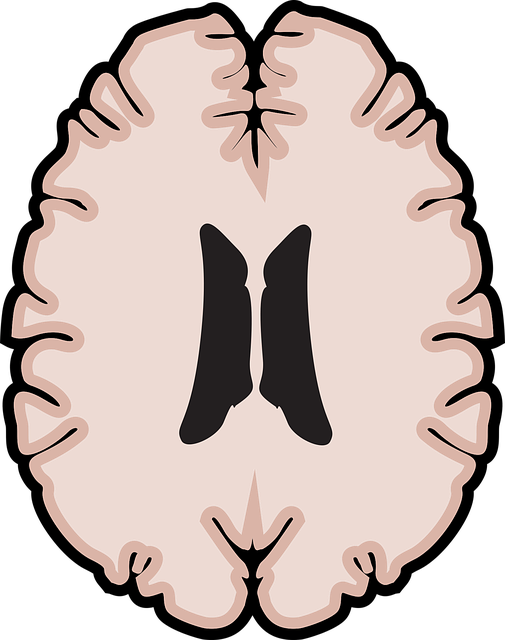Englewood Exposure and Response Prevention Therapy (EERPT) offers a targeted approach to mental health challenges in high-stress communities by combining exposure therapy, response prevention, mindfulness meditation, public awareness, and community wellness coaching. Success requires understanding local socio-economic conditions, gathering data on specific needs, and engaging community members for tailored interventions. Effective outreach involves cultural competency, integrating local feedback, and collaborating with stakeholders to integrate specialized therapy services into existing support networks. Measuring success includes evaluating participant satisfaction, knowledge gain, behavioral changes, program completion rates, and long-term sustainability strategies.
Community outreach programs play a vital role in addressing societal challenges, and one innovative approach gaining traction is Englewood Exposure and Response Prevention Therapy (EERPT). This article explores effective implementation strategies for EERPT-based initiatives. We delve into understanding the target community, identifying local needs, designing engaging outreach, building partnerships with stakeholders, and measuring success to ensure long-term sustainability. By implementing these steps, communities can foster positive change and improve mental health support.
- Understanding Englewood Exposure and Response Prevention Therapy (EERPT)
- Identifying Community Needs: Assessing the Local Landscape
- Designing Effective Outreach Strategies for Maximum Impact
- Building Partnerships: Collaborating with Key Stakeholders
- Measuring Success: Evaluating the Program's Effectiveness and Sustainability
Understanding Englewood Exposure and Response Prevention Therapy (EERPT)

Englewood Exposure and Response Prevention Therapy (EERPT) is a specialized form of treatment designed to address specific mental health challenges prevalent in communities like Englewood, where high-stress environments can trigger or exacerbate conditions such as anxiety and depression. This therapy combines elements of exposure therapy with response prevention techniques, focusing on helping individuals confront and manage their fears and anxieties in a controlled manner. By gradually exposing clients to stressful situations and teaching them alternative coping strategies, EERPT empowers them to respond differently to triggers, fostering resilience and improved mental wellness.
Incorporating mindfulness meditation and public awareness campaigns development can further enhance the impact of EERPT. Mental wellness coaching programs development within the community can supplement therapy by providing ongoing support, education, and resources tailored to individual needs. This holistic approach not only aids in managing existing conditions but also promotes proactive mental health maintenance, ensuring that residents of Englewood have access to comprehensive strategies for enhancing their overall well-being.
Identifying Community Needs: Assessing the Local Landscape

Identifying community needs begins with a comprehensive assessment of the local landscape. This involves understanding the socio-economic status, health trends, and cultural dynamics unique to the area. In communities like Englewood, for instance, where exposure and response prevention therapy (ERP) has shown promise in addressing mental health challenges, it’s crucial to gather data on prevalent issues such as trauma, stress management, and access to existing services. This data-driven approach ensures that outreach programs are tailored to meet the specific needs of the population served.
For effective implementation, community members should be actively involved in this process through surveys, focus groups, or community gatherings. By listening to their voices and experiences, organizations can design interventions like mental wellness journaling exercises or trauma support services that resonate with local realities. This not only enhances engagement but also fosters trust and sustainability for long-term success.
Designing Effective Outreach Strategies for Maximum Impact

Effective outreach strategies are key to maximizing the impact of community programs, such as Englewood Exposure and Response Prevention Therapy (EERPT). These strategies should be tailored to understand and address the unique needs and challenges faced by the target community. By employing Emotional Well-being Promotion Techniques, healthcare providers can enhance their cultural competency through training sessions that focus on conflict resolution techniques, ensuring better patient engagement and care.
Community engagement requires a nuanced approach that respects local dynamics and fosters trust. Incorporating feedback from community leaders and members into program design ensures relevance and effectiveness. EERPT, for instance, could benefit from incorporating local storytelling traditions to facilitate therapy sessions, making it more accessible and culturally sensitive. This holistic strategy not only improves individual emotional well-being but also strengthens the social fabric of the community.
Building Partnerships: Collaborating with Key Stakeholders

Building strong partnerships is a cornerstone for successful community outreach programs, especially when implementing evidence-based practices like Englewood Exposure and Response Prevention Therapy (EERPT). Collaboration with key stakeholders, including local organizations, healthcare providers, schools, and community leaders, ensures a comprehensive approach to addressing mental health challenges. These partnerships facilitate the integration of specialized therapy services into existing support systems, enhancing accessibility for those in need.
By joining forces, organizations can co-create tailored initiatives such as Stress Management Workshops Organization, Compassion Cultivation Practices, and Empathy Building Strategies, which empower individuals with coping mechanisms and foster a supportive environment. Such collaborative efforts not only amplify the reach of therapeutic interventions but also contribute to building resilient communities where mental well-being is prioritized and nurtured.
Measuring Success: Evaluating the Program's Effectiveness and Sustainability

Measuring success is a vital step in determining the effectiveness and long-term sustainability of community outreach programs like Englewood Exposure and Response Prevention Therapy (EERPT). The primary goal is to assess whether the initiatives are achieving their intended outcomes and positively impacting the target communities. One effective method is through comprehensive evaluation strategies that include both qualitative and quantitative data collection. This can involve surveys, interviews, focus groups, and observation to gauge participant satisfaction, knowledge gain, and behavioral changes. For instance, tracking the number of individuals who complete the EERPT program and follow-up sessions can demonstrate engagement and potential stigma reduction efforts.
Additionally, measuring sustainability requires examining the resources required for continued success. This includes staffing levels, financial support, community partnerships, and volunteer participation. By analyzing these factors, organizers can identify potential challenges and develop strategies to foster a thriving program over time, ensuring that initiatives like Mental Wellness Podcast Series Production and Burnout Prevention remain accessible and impactful for those in need.
Implementing community outreach programs, such as Englewood Exposure and Response Prevention Therapy (EERPT), requires a strategic approach. By assessing local needs, designing targeted strategies, building partnerships with key stakeholders, and continuously evaluating program effectiveness, communities can foster positive change and ensure sustainable impact. These initiatives not only address immediate concerns but also create a lasting foundation for improved mental health and well-being among all residents.














